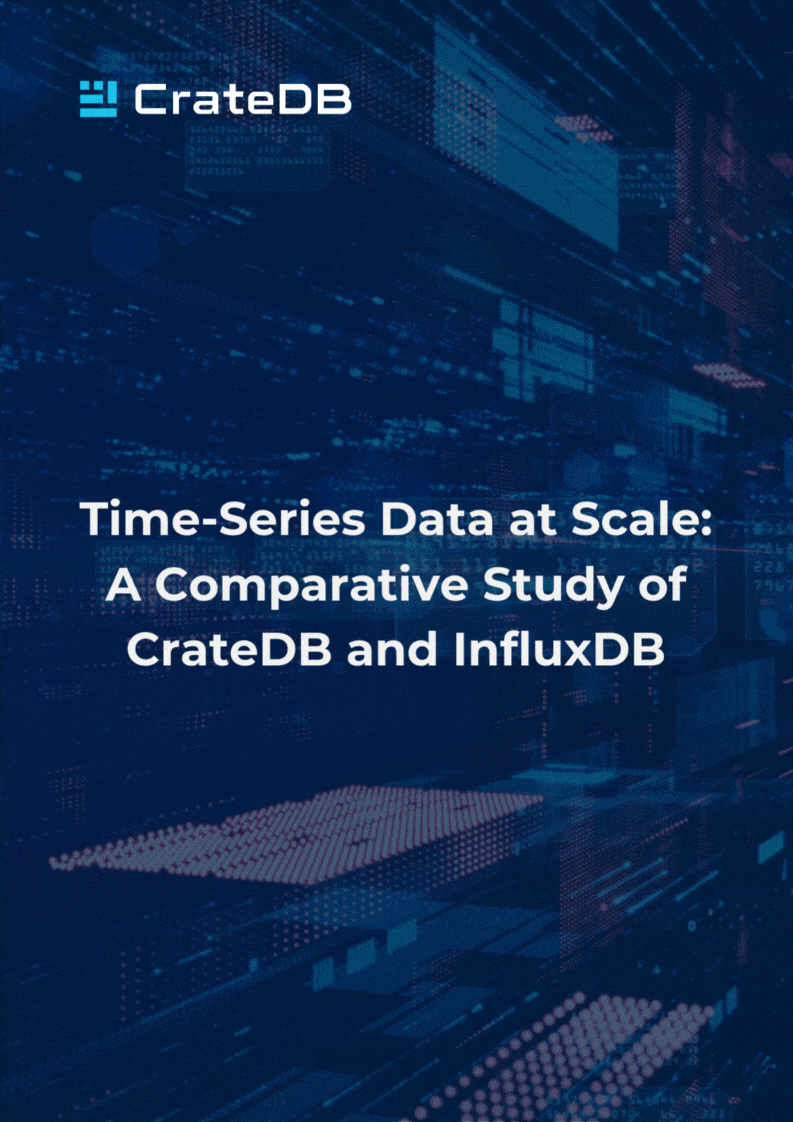Time-Series Data at Scale: A Comparative Study of CrateDB and InfluxDB
This white paper presents a comparative analysis of CrateDB and InfluxDB, two leading open-source databases for managing time-series data at scale. While both databases offer functionalities for handling time-stamped data, they differ in their scope, query language, and performance characteristics.
Already using InfluxDB but looking for a more advanced solution for your time series data? Discover our special migration offer here.
What you will learn
- What the fundamental features and specialized time series capabilities of CrateDB and InfluxDB are
- What type of data model are supported by each database
- How query languages differ for both technologies
- What the performance metrics of CrateDB versus InfluxDB are
- How to seamlessly migrate from InfluxDB to CrateDB without any difficulties
- How the ecosystem, community, and available support options influence the choice of the right database.
FAQ
Yes, we partnered with an independent database performance testing company to ensure objective and reliable insights into database performance. This external collaboration was key to providing impartial benchmark results and avoiding potential biases often seen when vendors conduct their own tests. Download the white paper now to get an independent performance comparison of InfluxDB and CrateDB.
We opted for the Time Series Benchmark Suite (TSBS), a widely-recognized standard for testing time series databases. TSBS simulates real-world workloads, ensuring that our performance evaluations are accurate and applicable to practical use cases. Interested what the results are? Download the white paper now.
The benchmark used the TSBS "DevOps" dataset, simulating 4,000 processes across a datacenter. Each process sends monitoring data every 10 seconds, resulting in 1 billion rows of data (31GB gzip file, 278GB uncompressed), creating a comprehensive test environment for evaluating database performance. Curious about the results? Download the white paper now.
CrateDB version 5.7.1 and InfluxDB 2.7.8. It is worth noting that we deliberately chose to benchmark against InfluxDB version 2.0. While the Influx team has publicly cited performance issues as a reason for embarking on a third complete rewrite of the database in a new programming language, at the time of writing, Influx 3.0 was not yet available as a downloadable binary. Moreover, it takes time for database technology to mature, and selecting a brand-new version for mission-critical production workloads is rarely advisable. Here, CrateDB offers a significant advantage, having been a proven and reliable technology for over a decade. Download the white paper now to get the results.
